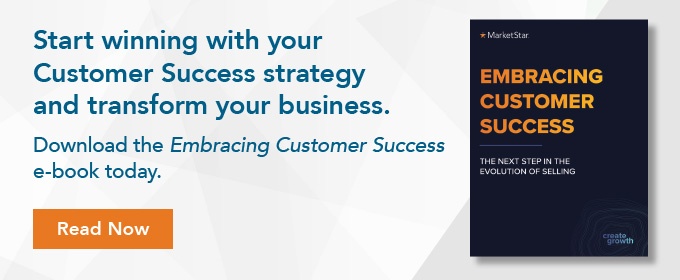
You are being measured. How do you stack up? Are you proving your client’s return on investment (ROI)?
Your clients need proof that their investment in your company is yielding quantifiable returns. And just as your customers apply their own metrics to the value of your products, you should be able to demonstrate value by proving customer success.
Caring about customer success metrics should be a priority. It has been proven time and again that the cost of customer retention is 20 percent of the cost of customer acquisition. Increasing your customer retention rate by as little as 5 percent can increase your profits by 25-95 percent. Customer engagement pays off, especially for B2B customers. According to Gallup, B2B customers with higher engagement scores achieve 50 percent higher sales revenues and 34 percent higher profitability. One of the best ways to promote customer engagement is with customer success metrics.
Prove your value because no one else will. Often, customers need to be shown why they should be pleased with the results you deliver, and metrics give them tangible evidence that they previously didn’t have.
Getting the Most from Customer Success Data
To capture and deliver meaningful customer success metrics requires a data-driven mindset. You need to understand the customer’s objectives and be able to apply meaningful metrics to demonstrate performance according to those standards.
It all starts with having a data-driven business culture. That means not only having the right sales tech stack in place but also means using data-driven reporting internally as well as with customers. Metrics should be part of team meetings and personnel evaluations. Every aspect of sales and customer support should be monitored and measured.
Part of creating a data-driven culture is sharing the data. Centralized access to data and reports ensures that decision makers and members of the customer success team have access to the same information.
Creating a data-driven customer success culture also requires showing everyone involved how to leverage the same data. Customer scorecards not only help track customer events and satisfaction, but they also provide a standardized approach to measuring performance. When assessing how to leverage the data, you want to create metrics that are meaningful to the internal customer success team as well as to the customer.
Applying Metrics That Matter
The metrics that matter most are those that align with customer objectives. When creating a customer success scorecard, you want to identify indicators that demonstrate value.
Start with the basics. Is the customer using your product or service? If they signed a contract and then shelved the product, it’s impossible to show value. Be sure to engage customers early in the contract to ensure they have the resources they need for success. They may need additional training, or they may need an onboarding rep or sales engineer to show them how to apply the product to get maximum value. You will never be able to demonstrate the value of shelfware.
Determine how the customer values the product or service. Does it improve efficiency, lower cost, increase speed, or deliver other measurable benefits? Also, determine if it has become an integral part of their business processes.
Create a targeted customer engagement strategy specifically designed to move the needle and demonstrate value. For example, are you at risk of being too reactive and just waiting for that angry customer phone call? How can you be more proactive? Do you have the right context for your data? Have the customer’s needs changed? Be prepared to address immediate issues but always bear in mind long-term customer goals.
It also pays to assess all aspects of customer health. Map the frequency of use to the features that are being used. Regularly ask customers about their level of satisfaction, problems they are encountering, and how to make the product or service better. Identify problem areas that may require improvement or additional training.
Customer needs will change so benchmarks cannot remain static. Realign your metrics based on the latest customer requirements.
Engaging a Data-Driven Customer Success Partner
Outsourcing customer success can help you develop a data-driven strategy. Engaging a Sales as a Service® partner gives you access to sales stack tools and resources specifically designed to measure customer success. It also frees your sales team from having to focus on post-sales support and allows them to start closing the next deal.
Outsourcing customer success also can be more cost-effective than maintaining your own customer success staff. It also gives you access to trained professionals who know how to work with customers and demonstrate measurable success while gathering the metrics you need for your internal sales team. Outsourcing helps you get started faster and gives you a resource that can scale as you close new customers.
If you want to learn more about how to create a data-driven customer success strategy, be sure to download our guide, Embracing Customer Success.







